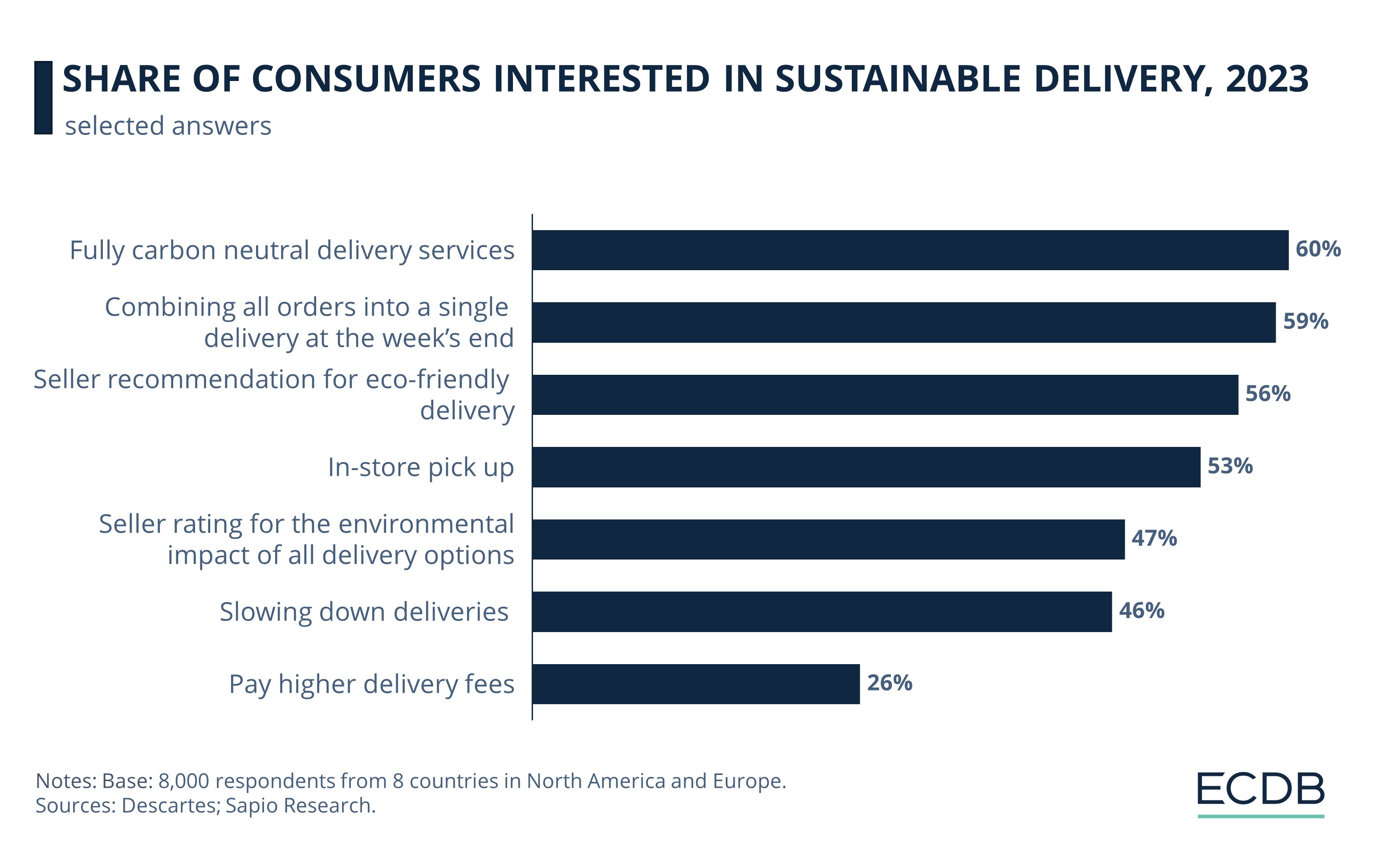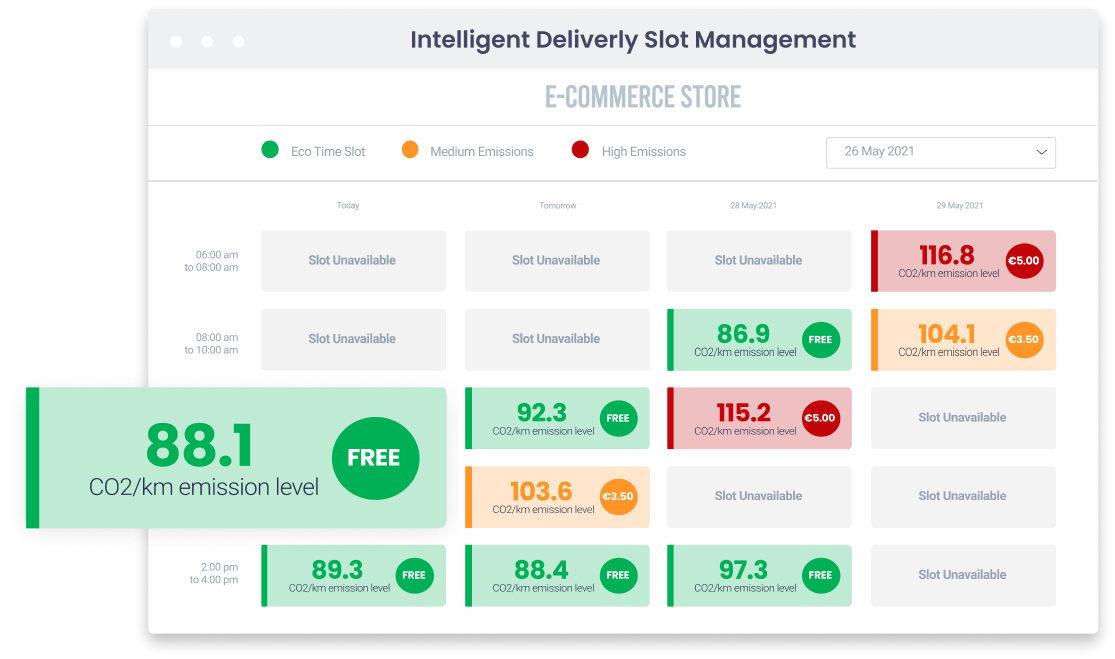The Ultimate Guide To Sustainable Delivery Options: Eco-Friendly Choices For Businesses

In today's fast-paced world, businesses face increasing pressure to reduce their environmental impact. As consumers become more eco-conscious, sustainable delivery options have emerged as a vital aspect of logistics. This guide explores the significance of sustainable delivery, its benefits, and practical solutions for businesses seeking to make a greener choice.

The Importance of Sustainable Delivery
Sustainable delivery options are crucial for minimizing the carbon footprint associated with shipping. Traditional logistics contribute significantly to greenhouse gas emissions, impacting climate change. According to the International Journal of Logistics Management, transportation accounts for nearly 29% of total U.S. greenhouse gas emissions.
By adopting eco-friendly delivery methods, businesses can not only comply with regulations but also enhance their brand image. For instance, companies that prioritize green logistics often attract environmentally conscious consumers, leading to increased loyalty and sales. Embracing sustainable logistics practices is no longer just a trend; it’s a necessity for responsible business operations.

Current Trends in Sustainable Logistics
The logistics industry is evolving, with innovative solutions showcasing the shift towards sustainability. Electric delivery vehicles are becoming more commonplace, reducing reliance on fossil fuels. For example, UPS has committed to a fleet of 10,000 electric vehicles by 2025, significantly decreasing its carbon emissions.
Additionally, many companies are leveraging technology to optimize delivery routes. This reduces fuel consumption and enhances efficiency. A recent report by the World Economic Forum highlights that route optimization can cut emissions by up to 15%.
Furthermore, consumers are increasingly demanding transparency in shipping practices. Companies like Amazon now provide customers with carbon-neutral shipping options, offering a glimpse into the environmental impact of their purchases. These trends indicate that sustainable delivery is not just beneficial for the planet; it's also a competitive advantage.

Evaluating Sustainable Delivery Options
When assessing sustainable delivery options, companies should consider several factors to ensure they make informed choices. Here’s a simple framework:
-
Carbon Footprint Analysis: Calculate the emissions associated with various delivery methods. Tools and calculators are available from organizations like the Environmental Protection Agency (EPA).
-
Packaging Materials: Evaluate the sustainability of packaging used in shipping. Opt for recyclable or biodegradable materials whenever possible.
-
Delivery Speed vs. Sustainability: Determine if faster delivery options are necessary. Slower shipping can often be more eco-friendly.
-
Local Partnerships: Collaborate with local delivery services that prioritize green logistics. This can significantly reduce transportation emissions.
By applying these criteria, businesses can effectively evaluate their sustainable delivery options and choose practices that align with their environmental goals.
Challenges in Implementing Sustainable Delivery
While the benefits of sustainable delivery are clear, implementing these practices can be challenging. Many companies face barriers such as high initial costs and a lack of infrastructure. For instance, transitioning to an electric vehicle fleet requires significant investment and planning, which can deter some businesses.
Moreover, there can be resistance to change within organizations. Employees may need training to adapt to new processes, which can be time-consuming.

Supply chain complexities also pose challenges. As highlighted in the Sustainable Logistics Report 2025, many companies struggle to find eco-friendly suppliers, complicating their efforts to implement sustainable practices.
Case Studies of Successful Sustainable Delivery
Several companies are leading the way in sustainable delivery, setting examples for others to follow:
-
Amazon: The retail giant has pledged to reach net-zero carbon by 2040. Their carbon-neutral shipping initiative offers customers eco-friendly delivery choices.
-
FedEx: Committed to carbon-neutral operations by 2040, FedEx is investing in electric vehicles and sustainable aviation fuel.
-
UPS: As mentioned earlier, UPS aims to incorporate 10,000 electric vehicles into their fleet, significantly reducing emissions.
-
DHL: The logistics company has implemented a GoGreen program that includes climate-neutral shipping options and sustainable packaging solutions.
-
Walmart: With their Project Gigaton initiative, Walmart aims to reduce emissions in its supply chain by one billion metric tons by 2030.
These companies demonstrate that investing in sustainable delivery options can yield positive environmental impacts while enhancing their market position.
Conclusion and Future Directions
Sustainable delivery options are essential for businesses aiming to reduce their environmental impact and meet consumer expectations. By understanding the importance of eco-friendly logistics and implementing best practices, companies can contribute to a healthier planet.
As we look to the future, innovations in green logistics will continue to emerge, presenting new opportunities for businesses. Now is the perfect time to evaluate your sustainable delivery options and take action. By doing so, you not only benefit your business but also play a vital role in protecting our environment.
Explore more about sustainable practices and discover how you can make a difference today!